Now that we have the basics of spaceflight out of the way, we can turn to the most obvious application of spaceflight for military purposes, putting up a fancy camera to see what the enemy is up to.
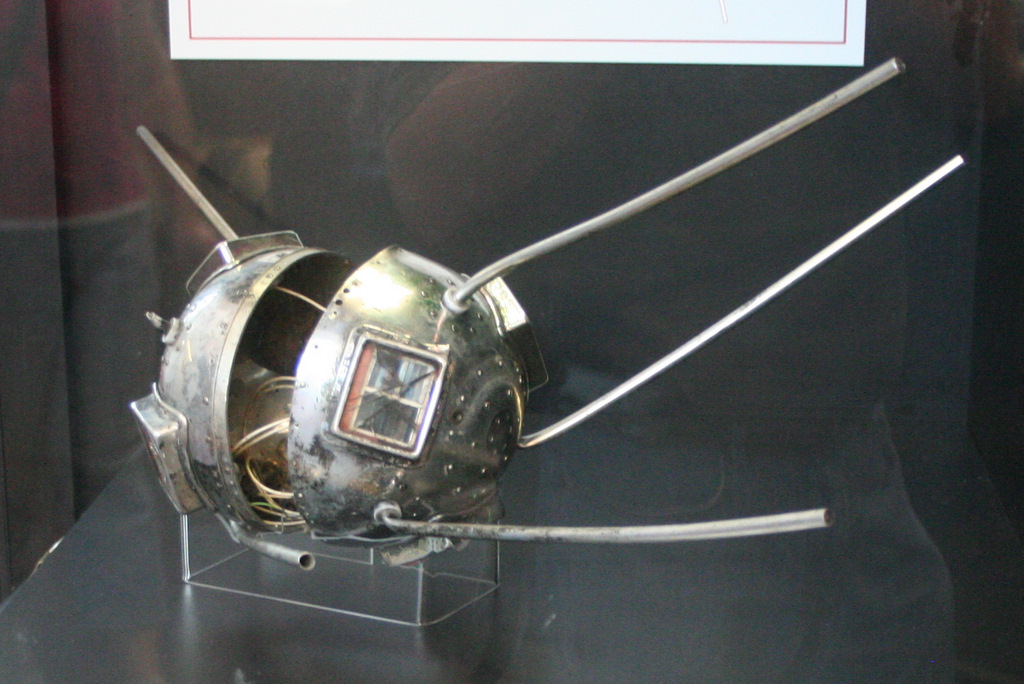
The remains of the US attempts to establish the precedent of free overflight
Reconnaissance satellites were an early priority for the US space program. The Soviets went to great lengths to limit the flow of information to the west, restricting travel in vast areas, falsifying maps and giving facilities the names of cities dozens of kilometers away. For many years, the best source of mapping data were captured German aerial photos taken during the war. In the early 50s, the lack of information had led to the "bomber gap", where the US erroneously believed that the Soviets had produced a massive fleet of intercontinental bombers. U-2 overflights proved that the actual numbers were barely into double digits, but only after a few years of frantic buildup left the US bomber force in the thousands. Worse, the U-2 was becoming increasingly vulnerable in the face of improved Soviet air defenses, and the diplomatic consequences of overflights were growing ever worse. Satellites could fill this role, and ensuring free overflight became the law was a major priority of Eisenhower's, to the point that he prioritized the civilian Vanguard rocket over the missile-derived Juno I to aid in making his case.
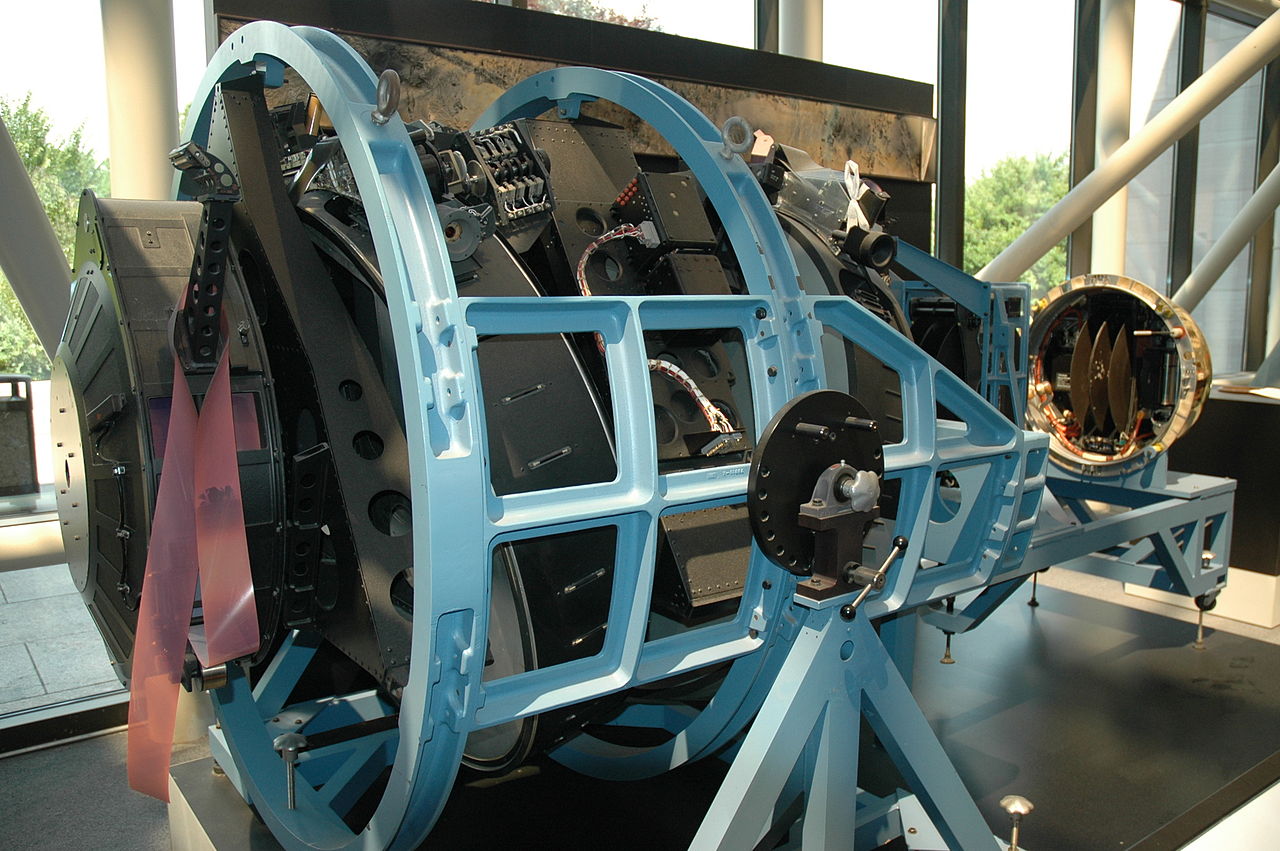
A Corona satellite in NASM
With the precedent established, the recon satellite program, known as Corona, went into high gear. The biggest problem Corona faced was how to get the images back. TV cameras of the day didn't have the resolution to be useful and required a constant link with a ground station, difficult to arrange over the Soviet Union. Proposals were made to take pictures using film, then develop it onboard, scan the image and transmit it back, but they ran into problems of bandwidth and time in range of the receiver. The only real option was to send up a very big film camera, take a bunch of pictures, then store the film in a capsule that could safely enter the atmosphere. Once it was descending by parachute, a specially-equipped airplane would pluck it out of the sky.
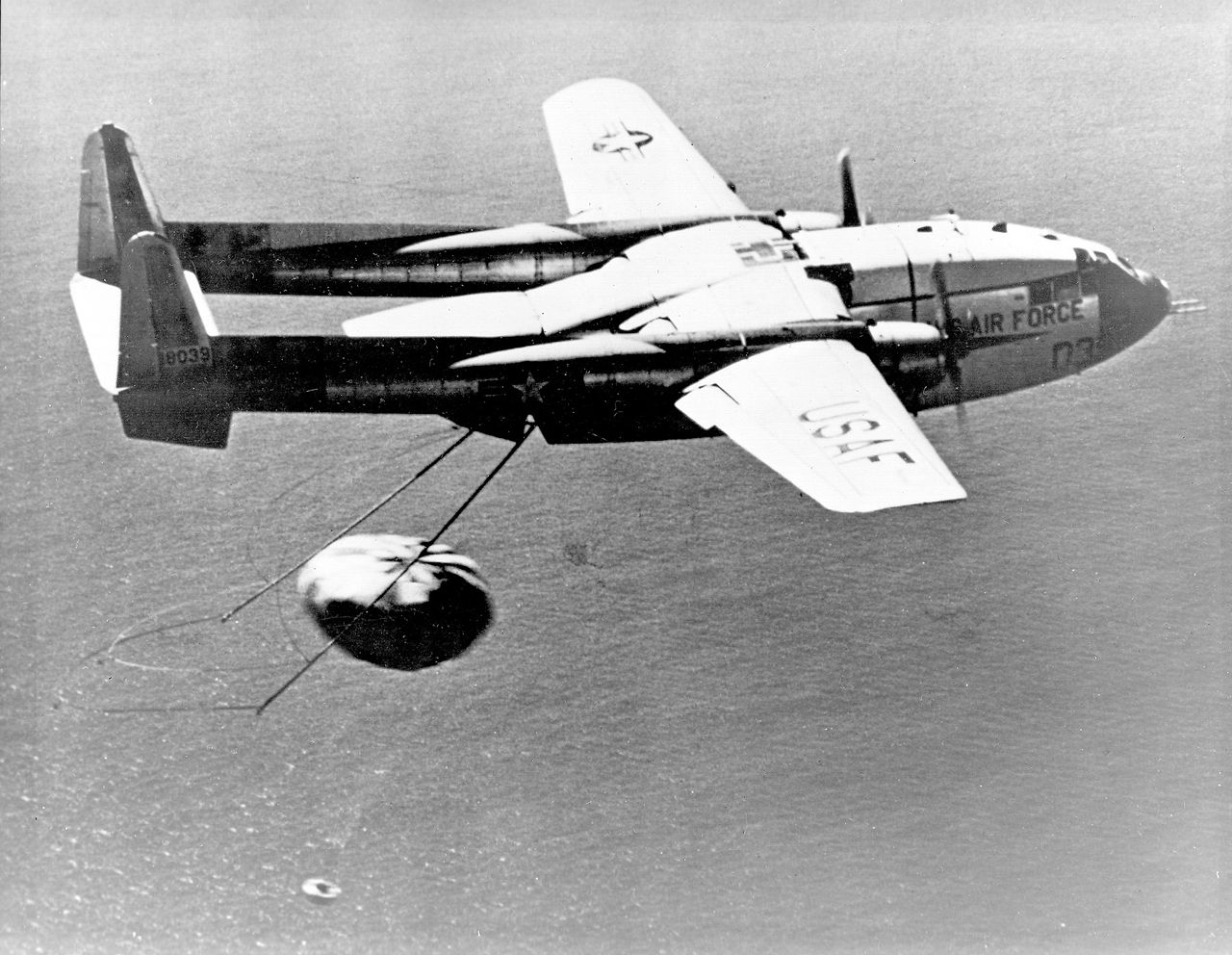
A C-119 captures a film capsule in flight
Testing for Corona, which was given the cover name of Discoverer and sold to the public as a series of satellites to test out new technologies (the return capsule was said to be for biological specimens) began in 1959, although technical difficulties dogged the program. Many of these were related to the Thor launch vehicle or the Agena upper stage, which the camera equipment was built directly into, but the recovery system also proved extremely tricky. Finally, after a number of changes, the 13th flight was a success, and the capsule, an R&D version that carried no camera, was put on display. The next flight, in August 1960, was the first to return imagery from space. Flights began to go up regularly, and they soon confirmed that the missile gap as as illusory as the bomber gap had been.
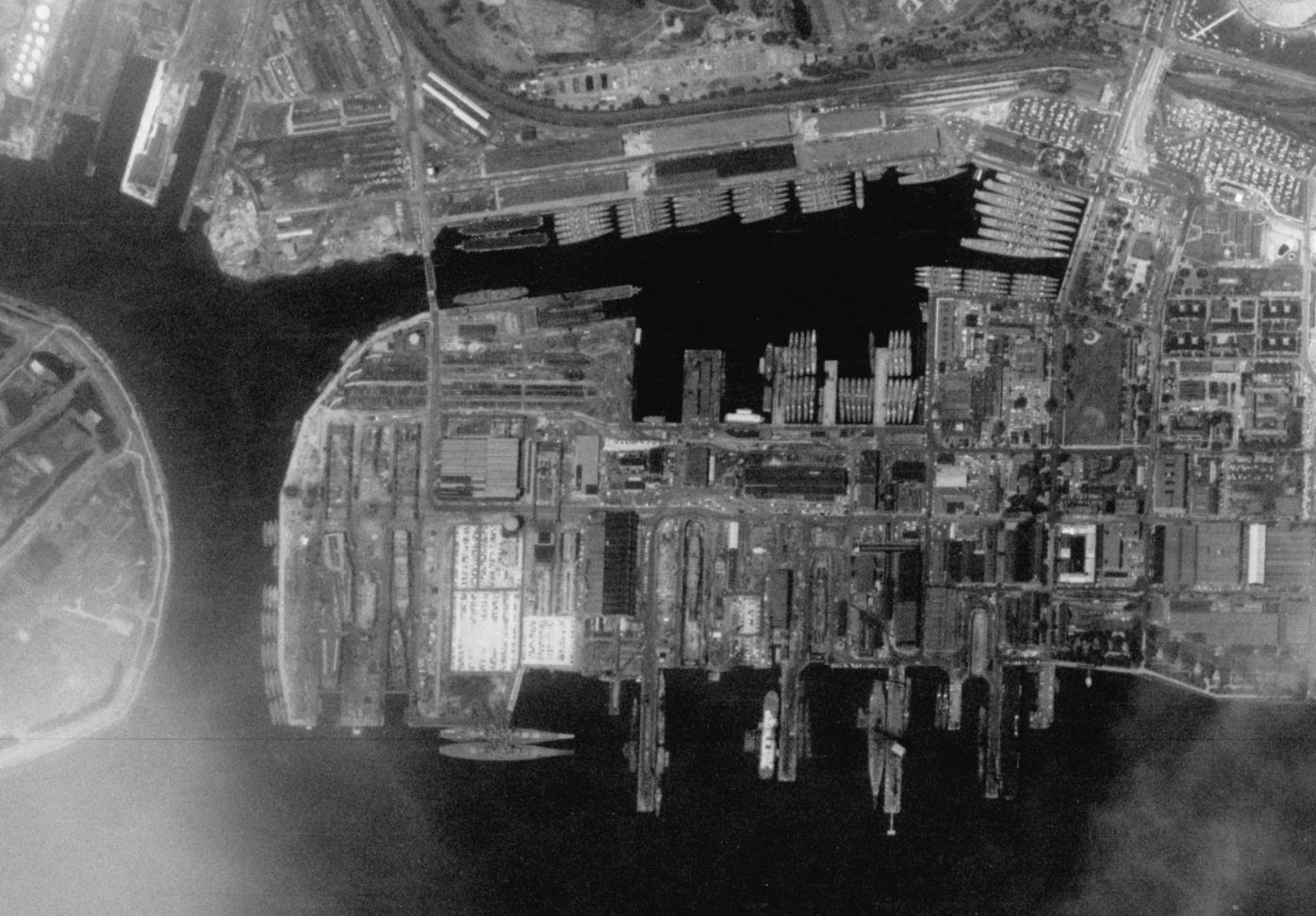
Philadelphia Navy Yard from a Corona, 1968.
Corona continued to fly throughout the 60s, with the early KH-1 satellites giving way to the slightly improved KH-2 and KH-3 types. But the big leap came with the KH-4, which added a second camera of the same type, an addition made possible by an improved booster that could carry heavier payloads. One camera was tilted 15° forward along the orbit, the second 15° back, providing a stereoscopic view of the area below for image analysts, who estimated that it doubled their ability to resolve details. Resolution was somewhere around 50' for KH-1, falling to 35' for KH-3 and KH-4. But the cost of flying an entire satellite every time photos were needed was beginning to stretch even American budgets, and the engineers came up with a clever solution: they would install a second film capsule on the KH-4A and KH-4B, which not only doubled the film capacity of the satellite, but also solved another problem. Despite everything about the program being classified, the Soviets were generally able to figure out when a launch was a recon satellite, and squirrel away their best toys for the 4 days or so that the film lasted. The second capsule could be set for delayed activation, and catch whatever was going on a few weeks later, although letting the satellite sit raised the risk of something going wrong significantly. KH-4B flights continued into the early 70s, before it was replaced by later, more advanced, systems.
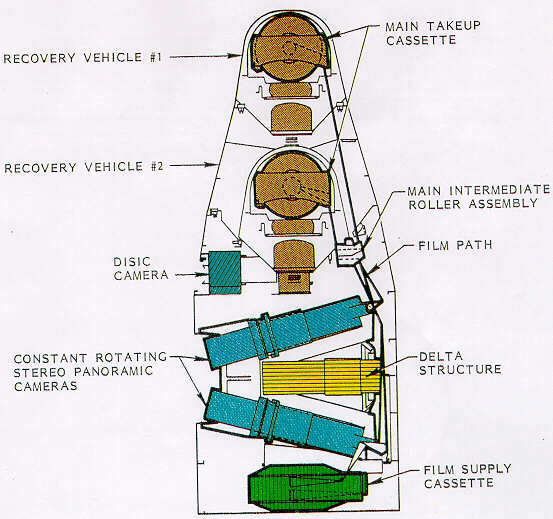
A KH-4 camera system
Ultimately, data from Corona was vital to the emerging ballistic missile force. A bomber's crew could be told to attack a target of a certain type and pointed into the general area, but a ballistic missile needed to know precisely where it was going before launch. The quality of the imagery was also useful for general mapping purposes, prompting the installation of reference cameras on the later KH-4s and the creation of the KH-5 Argon to collect lower-resolution imagery worldwide. On the other side of the spectrum was the much bigger KH-7/KH-8 Gambit, which used a different booster to fly an Agena-derived stage carrying a much bigger single camera. This camera had a reported resolution of 18" or less, and was used to photograph specific high-value targets from 1963 into the mid-80s.
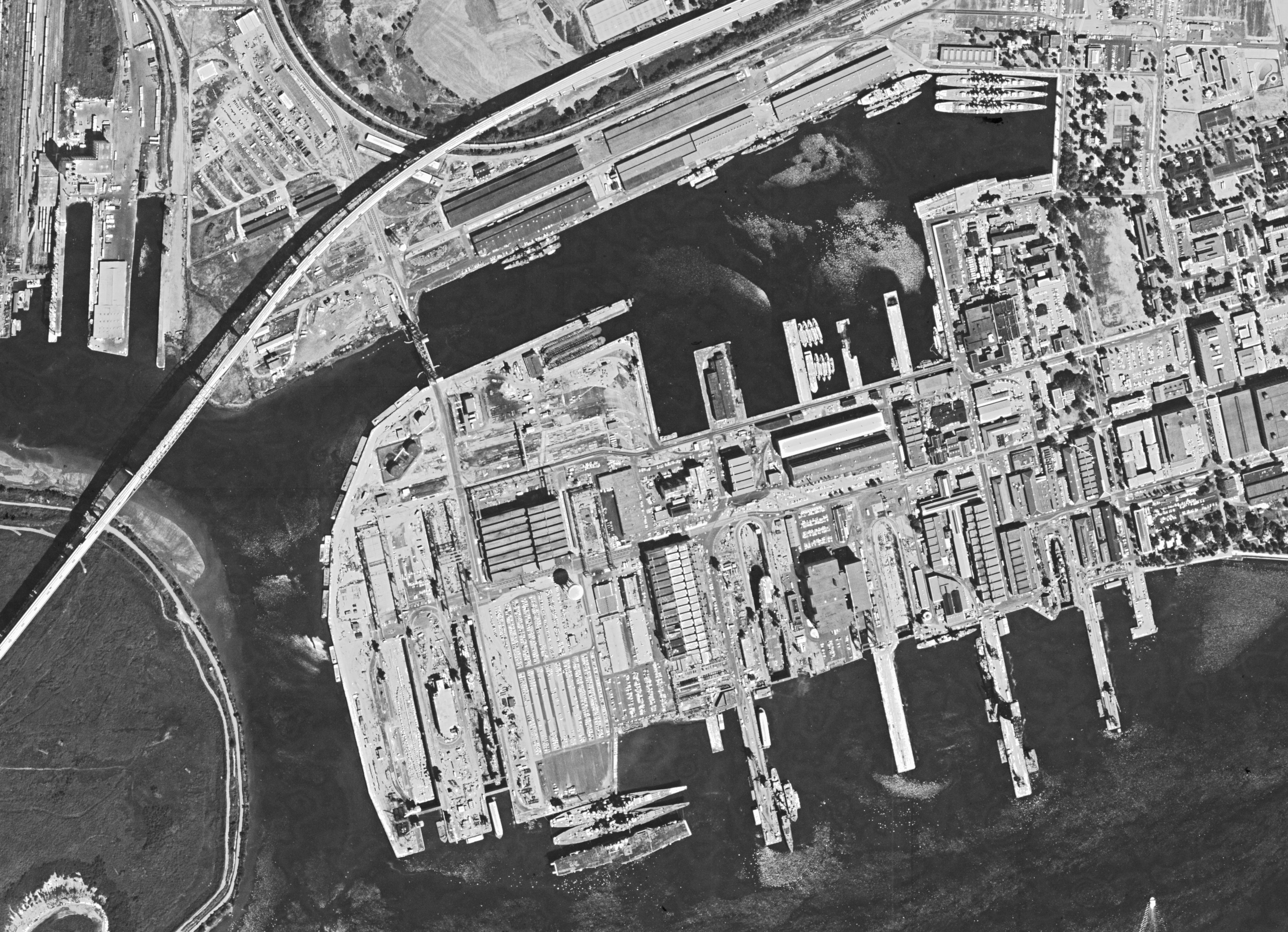
Philadelphia Navy Yard, 1980. Likely from a Gambit or Hexagon
But the reconnaissance community wanted something more, and in the early 70s, they got it in the form of the KH-9 Hexagon. This was the first American imagery satellite not to use the Agena stage, and its much greater size meant that it was also known as "Big Bird". Hexagon carried both a mapping camera and a pair of high-resolution stereo cameras, returning the film in one of four capsules. Resolution was roughly on par with that of Gambit, and the spacecraft was placed in a lower orbit than had previously been typical to boost resolution further. Particularly over the 150-day+ life of each KH-9, atmospheric drag became a serious concern, and the satellite's propulsion system had to frequently reboost it to make sure it didn't come down early.
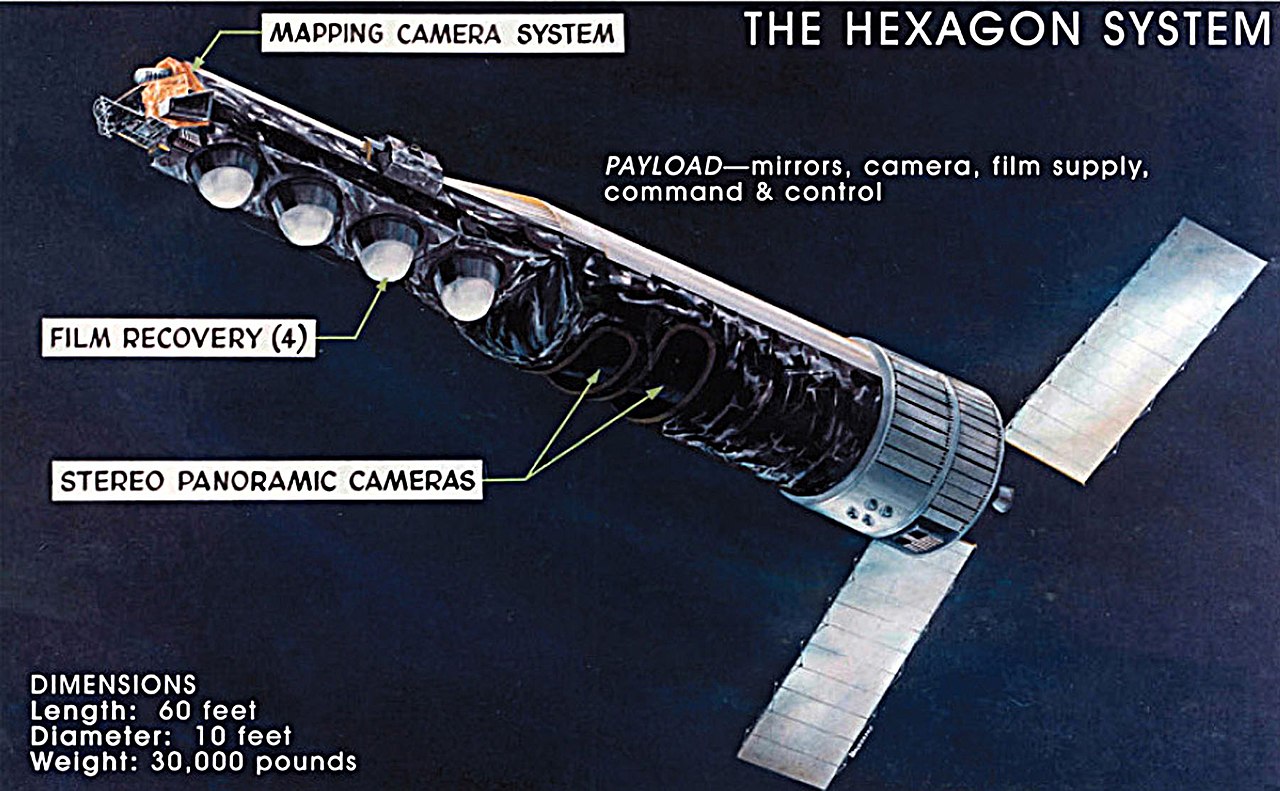
Although undeniably successful, the film-return satellites had a major downside. No imagery could be accessed before the film was deorbited, snatched out of the air, and then developed. This was fine for mapping and industrial studies, but it could be a serious problem if, say, the President was worried about an impending Soviet attack. Given the bandwidth limitations that prevented photos from being developed on orbit and radioed down, it was clear that any real-time system would need to have some degree of onboard intelligence, which could do at least part of the work of identifying targets and figuring out what was going on, passing only the important bits down to the ground. And given that thinking on this started in the early 60s, when existing computers struggled to support Corona, the only available source of onboard intelligence was a crew. The result was a string of plans for manned recon satellites, which came closest to success in the form of the Manned Orbiting Laboratory (MOL). MOL, which had originated as a general-purpose testbed before focusing on optical observation (that part being designated as KH-10), would have had a crew of two, launched in a Gemini capsule with the station and left up for 30 days before they came back down. But the spiraling cost of the Vietnam war soon claimed MOL, just as improvements in technology made unmanned real-time imagery available.
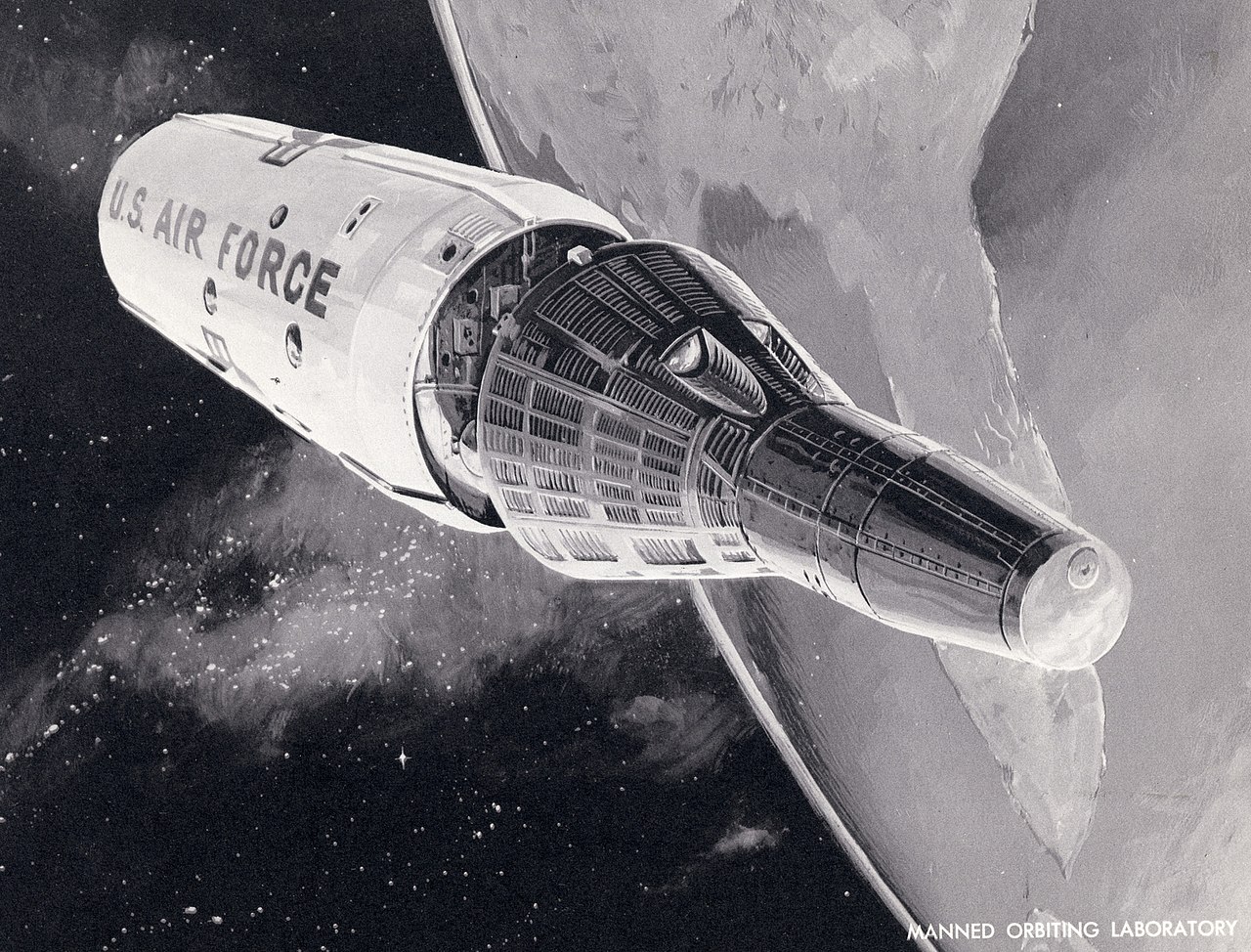
MOL
Several different features came together to produce the next generation of reconnaissance satellites, designated KH-11. One was the use of digital sensors, some of the first uses of digital photography anywhere. The other was the use of the new Satellite Data System as a relay, removing the time constraint on data transmission. The result closely resembled the Hubble Space Telescope, to the point that both were able to use the same cases, although the first one flew in 1976, 14 years before the civilian telescope. Besides real-time data transmission, the new digital satellites had another major advantage. Instead of being limited by the available film, their lifetime was set by the longevity of their electronics and the supply of fuel, required to adjust their orbit for better target coverage and to reboost the telescope. In practice, the early models lasted 3 years or so, while later models have had increasingly longer lifespans.
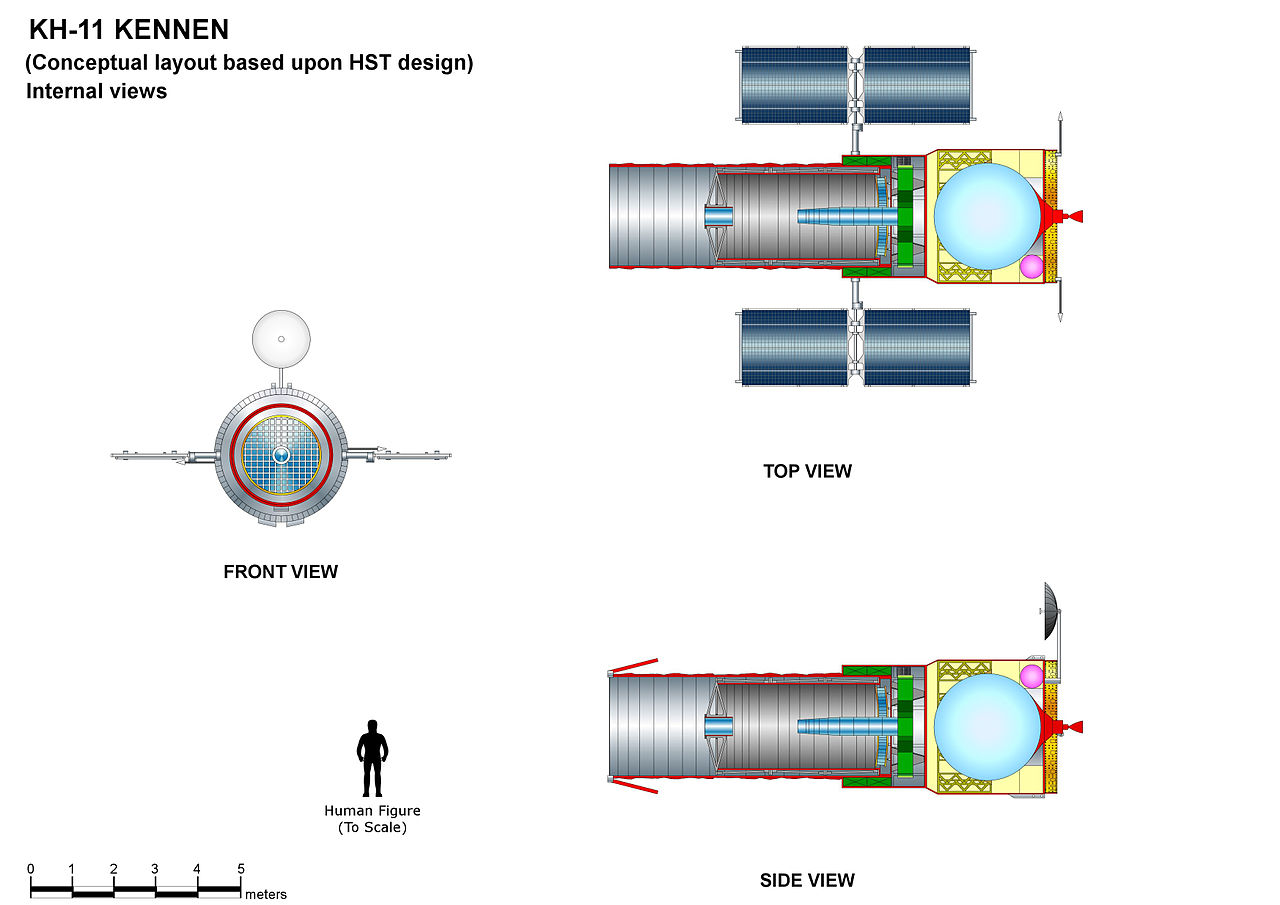
Speaking about recent recon satellite programs is fraught with classification problems, but it appears that the KH-11 program, or close descendants continues to this day. The satellite has been updated several times, with reported updates including color1 and infrared capability, an image resolution as low as 10 cm, some ELINT antennas and a higher-bandwidth datalink. But the biggest change has been more fuel, to the point that the oldest KH-11 satellite still in orbit was launched in 2005. Typically, the satellites are placed in two sun-synchronous orbital planes, one about two hours before noon, the other an hour after, to allow image analysts to compare photos taken under different lighting conditions. The orbits are set up so the ground track repeats every four days, although the satellites can photograph things well off their orbital track. Exactly how capable they are at this is unclear, but it is likely that they can photograph a given target almost every day if the operator is willing to accept some fairly bad angles. Historically, there have been two satellites in each plane, but recently a third pair have been launched into a different plane for reasons that aren't entirely clear.
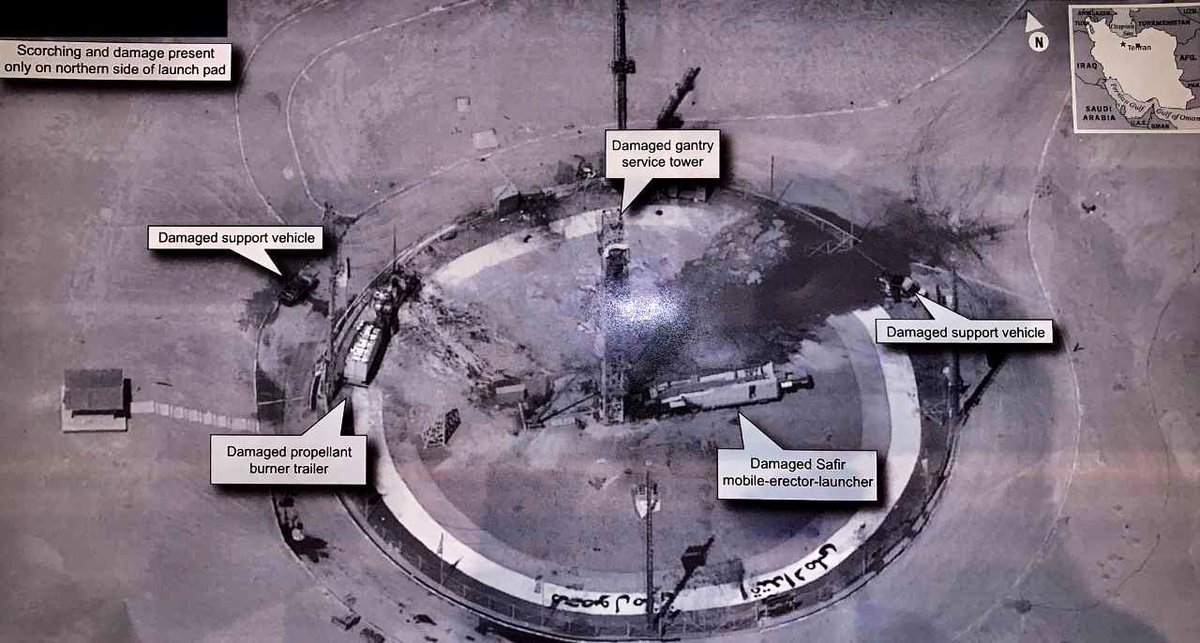
A recently declassified image, believed to be from a KH-11
The KH-11 is also believed to have served as the basis of the Misty satellites, a series of stealthy reconnaissance birds that attracted significant public controversy due to their budget. An attempt to replace the KH-11 starting in the late 90s was termed Future Imagery Architecture, but it ran into serious cost overruns, and the optical portion of the program was cancelled in 2005. Two spare mirrors produced by FIA were donated by the National Reconnaissance Office (NRO, the organization that oversees America's space intelligence assets) to NASA in 2012, each of which was described as about equivalent to the Hubble's mirror. One of these will be used for the upcoming Roman Space Telescope.
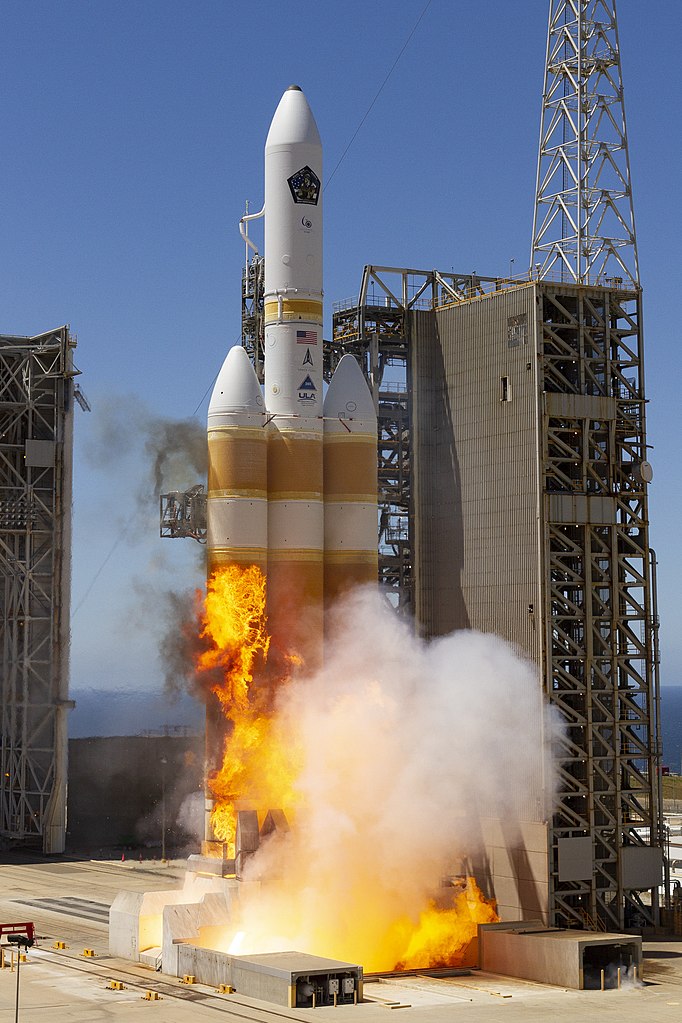
A Delta IV Heavy carries a KH-11 to orbit
All of this comes at a considerable cost. While the NRO's budget is largely classified, the best available information indicates that each satellite costs something like $2 billion in present dollars.2 Even in the mid-60s, President Johnson said that the billions spent so far had been worth it for the peace of mind it provided him. But changes in space operations have opened up new options. The last decade or so has seen an increasing emphasis on small satellites, and the NRO appears to be part of this. While most of the details are still highly classified, we have reports of a program codenamed Blackjack, and presumably other constellations that will trade precision for more frequent passes are going up on the most recent classified launches. A more public example of the rise of smallsats is the Chinese Jilin-1 constellation, currently composed of 130 satellites, most equipped with .75 m resolution imaging sensors. While in theory the system is for civilian use, in practice it allows the PLAN to track American naval movements pretty much entirely optically, at least in daytime and good weather.
None of this should be taken to imply that recon satellites were a US monopoly (the Soviets had a very active program of their own, and lots of other people got into the game later on), or that imaging satellites were the only things that the military uses space for. We'll take a look at non-optical recon satellites next time.
1 A bit of color film was flown on some Corona satellites, but it didn't bring enough benefits to compensate for its lower resolution relative to black & white film. ⇑
2 The usual coasting caveats apply, and are even more important when the production run is as small as the KH-11 has been recently. ⇑

Comments
There's a story that when Hubble was being specced out, the optics company dropped a few hints about how it would save a lot of money if they went with a 2.4 meter mirror (because they were already in use on the spy satellites, so the company already had tooling set up).
I'm not sure this story is true - I can't find a source - but it seems plausible given the overlap in technology.
beleester:
I'd certainly heard about the mirror diameter of Hubble being changed for commonality with spysat mirrors.
I have little doubt about any of that. All of my sources agree that Hubble is very closely related to KH-11, and I suspect that there was a lot of "here are your options, and you'll note that this one is suspiciously cheaper than the others" that went into it.
Given that you can take a pretty decent photo of a KH sat with a $1000(?) telescope, is it just government pressure that prevents astronomers from giving us more information about them?
Most telescopes aren't designed to take photos of things in orbit. You can get a small one to do that, but I don't think most big ones are physically able to. The ones that are are controlled by governments, who generally don't release that data. Maybe there's a few professionals who have telescopes capable of imaging KH-11s, but in that case, the incentive not to get blacklisted by the US government (a major source of science funding) is pretty obvious.
Also, there's the question of how much more information we could get about them with moderately better pictures.
Just back from a short course about space, so to expand on why astronomers don't give us more info:
An astronomy telescope will work fine when pointed at a geostationary satellite, but there are a lot less of those and they are nearly always just comms relays of some sort.
The more interesting satellites are in lower orbits, and they move across the sky much faster than a planet does, let alone a star. To take a good photo the telescope has to have a long exposure time, since things in space are a long way away and poorly lit. (Usually too little light, sometimes too much.) Which means the telescope must track the motion of the subject while the shutter is open. (This is why unprocessed astronomy photos of planets/moons will show the stars as streaks.)
Big telescopes are already horrendously expensive and fragile compared to radio antennas or dishes. Making them move at all with precision is even more expensive. Civilian astronomers looking at the planets or beyond don't need fast tracking, so don't pay for it.
A reasonable assumption would be that an affordable tracking telescope on the ground (maybe sponsored by an open-source intelligence company) would provide about the same image quality as the satellites themselves. This limits the resolving of features on the satellite to a few inches in size.
Sure, you might be able to tell the number of large cameras or size of the solar arrays or something. But I'm not certain that would give you anything worth the cost. The satellite is going to look like a satellite and the unique features are going to be absent.
I'm not sure that you'd be able to get even the same level of detail. The biggest commercially-available telescope I can find is 50", which is half or so of the diameter of the mirror on a KH-11. Add in that you don't have the tech and your viewing angle is likely to be bad, and I expect you'd have trouble resolving details below 1' or so. And that telescope is about $125,000, and it's definitely not set up for the quick maneuvers you'd want to follow a satellite. So an OSINT company is going to need a pretty compelling reason to drop a quarter-million or more on this. And there just isn't one.
I had a friend who worked at the Defense Mapping Agency in the photo reproduction lab during Desert Storm.
We didn't see him for a while till things began to settle down. We would ask him things like What kind of car does Sadam Hussien drive? Do you know his license plate number? He really got bothered by our questions so we stopped. Later he confided he did know all the answers to all our silly questions..... Isn't technology wonderful?
@bean
This is a forum I found ith the sme question:
https://www.cloudynights.com/topic/838289-what-is-the-largest-commercially-available-telescope-on-the-market-today-i/
Which leads me here for custom-made, up to 65" telescopes:
https://explorescientificusa.com/collections/optiques-fullum-folded-newtonians
Not sure what tracking abilities these have though.